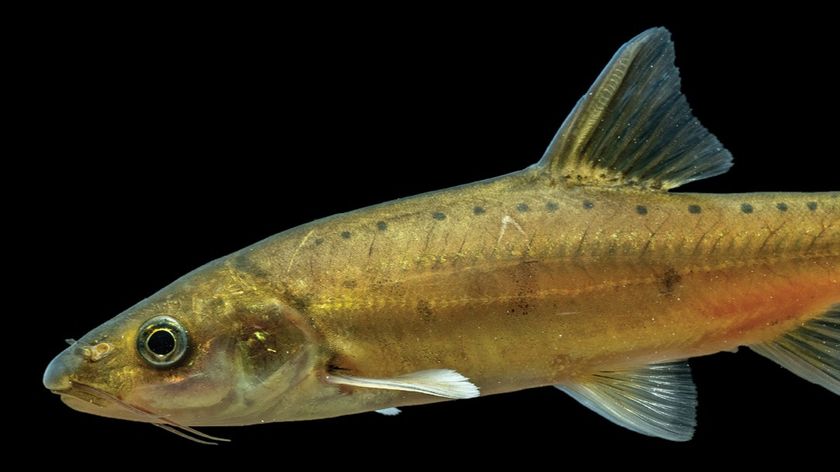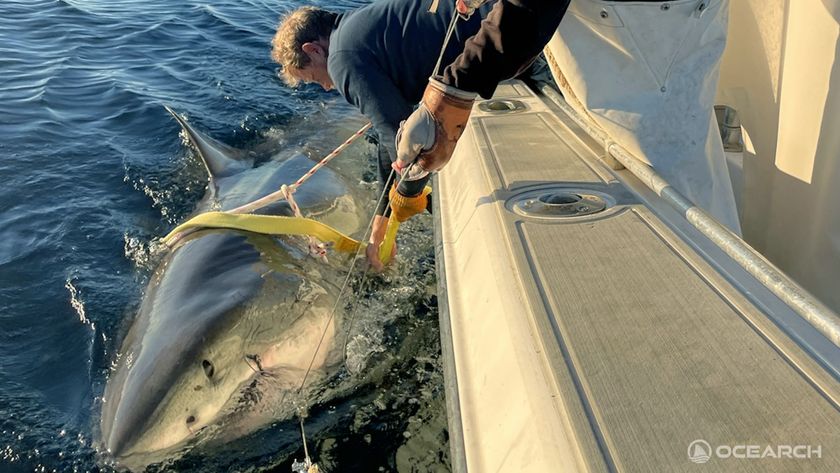Photos of the Largest Fish on Earth
Mekong giant catfish
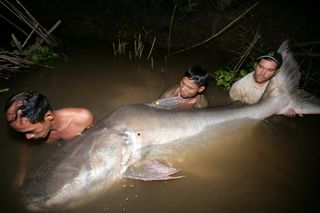
One of the largest fish in the world, the Mekong giant catfish grows to 10 feet (3 meters). Native to the Mekong, it is critically endangered. Current threats to the Mekong giant catfish include overfishing, dam building and habitat destruction, said Zeb Hogan, host of the Nat Geo WILD's "Monster Fish." This photo was taken in Cambodia's Tonle Sap River in 2007.
In Thailand, cave paintings thought to be of the fish date back thousands of years, Hogan said. Fishermen caught a 646 pound (293 kg) giant catfish in northern Thailand in 2005; this catch is the current record holder for world's largest freshwater fish, Hogan said.
Giant stingray
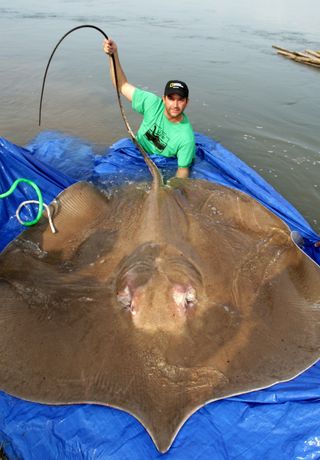
The giant freshwater stingray (Himantura polylepis) is one of the largest freshwater fish in the world, Hogan said. No one is sure how many giant stingrays are left, which habitats they prefer, or even if they ever venture into the ocean, where their more commonly known relatives dwell. These ancient fish, little changed over many millions of years, can reach 16.5 feet (5 meters) long and weigh up to 1,320 pounds (600 kilograms). They are brown to gray in color, wide and flat in form, and they sport a long, whip-like tail. Giant stingrays occur in river systems in Thailand, Borneo, New Guinea and northern Australia, Hogan said. They often bury themselves in sandy or silted river bottoms and breathe through holes, or spiracles, located on top of their bodies. Stingrays locate prey, usually clams and crabs, with a sensor that can detect an animal's electrical field.
Stingray numbers appear to have dropped dramatically in recent years as their riverine habitats have degraded. Large stingrays have been known to pull boats upstream and even underwater, Hogan said. Though stingrays do not readily attack humans, they are one of the few "monster fish" that can pose a real danger to those who handle them. Each ray sports a deadly barb on the base of its tail that can easily penetrate human skin and even bone, much like a hunting arrow, Hogan said. This stinger can be as long as 15 inches (38 centimeters) and typically introduces toxins to the victim's wound, he said.
Arapaima
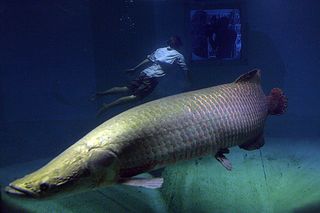
The arapaima (Arapaima gigas), called a pirarucu in Brazil, is one of the largest fish in South America. This fish was photographed in Manuas, Brazil, in 2007.
The goonch
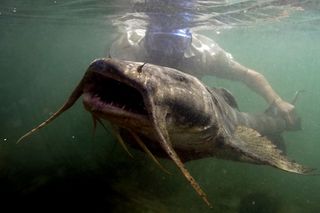
The goonch, a large, predatory catfish, occurs throughout much of Asia, especially in rapids areas of Himalayan rivers, the main Mekong River and the largest tributaries. Although widespread, this species may be threatened by increased development and pollution in the rivers of Asia, Hogan said. The goonch is the subject of stories of man-eating catfish in India, he added. According to the reports, which have not been verified, the goonch developed a taste for humans after feeding on the remains of corpses burned on riverbank funeral pyres in northern India. In reality, large fish are now so rare and heavily fished that it's very unlikely that the fish grows to a size capable of attacking human-sized prey, Hogan said. This picture was taken in the Ramganga River, India, in 2010.
White sturgeon
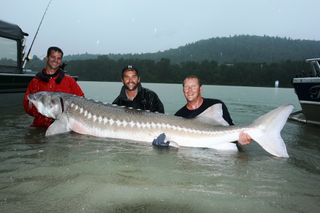
The white sturgeon is one of the largest freshwater fish species in North America growing to over 15 feet in length and weighing over 1000 pounds, Hogan said. Strongholds for the population include the Fraser River in Canada and the Sacramento River in California, he added. The largest threats to white sturgeon in North America are dams. Fragmentation due to dams has led to the decline of several populations in the Columbia basin. Some previously anadromous populations (which go from freshwater to salt water) are now landlocked due to dam construction.
Spoonies
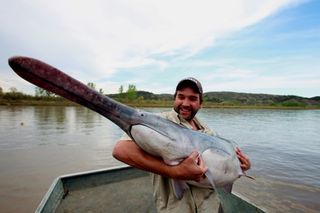
Sometimes referred to as "spoonbill," "spoonies" or "spoonbill catfish,", the spoonbill isn't really a catfish at all, but rather a close relative of the sturgeon, Hogan said. Mississippi paddlefish are a primitive fish; one of only two paddlefish species in the world. They can grow to over 6 feet in length and weight over 200 pounds. The Mississippi paddlefish produces high quality caviar that can sell for several hundred dollars a pound. This demand for caviar has led to poaching in some areas —unscrupulous fishermen target spawning fish at night to harvest their eggs, Hogan said. This photo was taken in the Missouri River in Montana in 2010.
Wallago
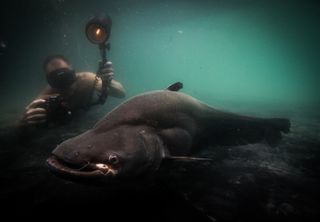
The wallago catfish occurs in freshwaters from Pakistan to Vietnam, Hogan said. The wallago catfish is a large, predatory catfish, attaining lengths of up to 7 feet. In India, the species is threatened by over-harvest, habitat degradation, and pollution. Due to these threats and declining abundance, the species is considered endangered in India, Hogan said.
Sign up for the Live Science daily newsletter now
Get the world’s most fascinating discoveries delivered straight to your inbox.
Sawfish
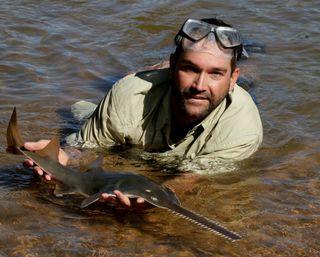
The freshwater sawfish is critically endangered; healthy populations are only found in a few locations, including the Fitzroy River in Australia, where this photo was taken in 2009, Hogan said. Freshwater sawfish spend the first years of their life in freshwater, then move to coastal (marine) environments as adults, he added. This is a baby but adults can grow up to 20 feet long, Hogan said.
Giant Siamese carp
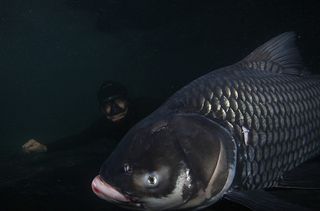
The giant Siamese carp is a relative of the goldfish, the giant carp can grow to 600 lbs and 10 feet in length. It's now listed as critically endangered.

